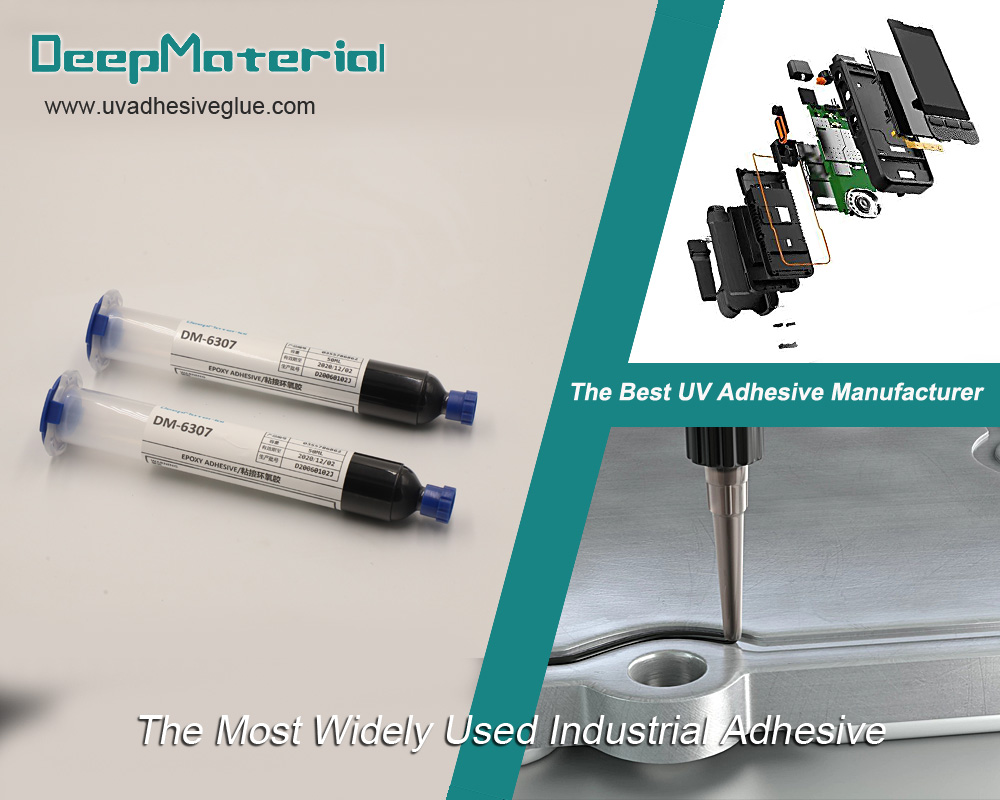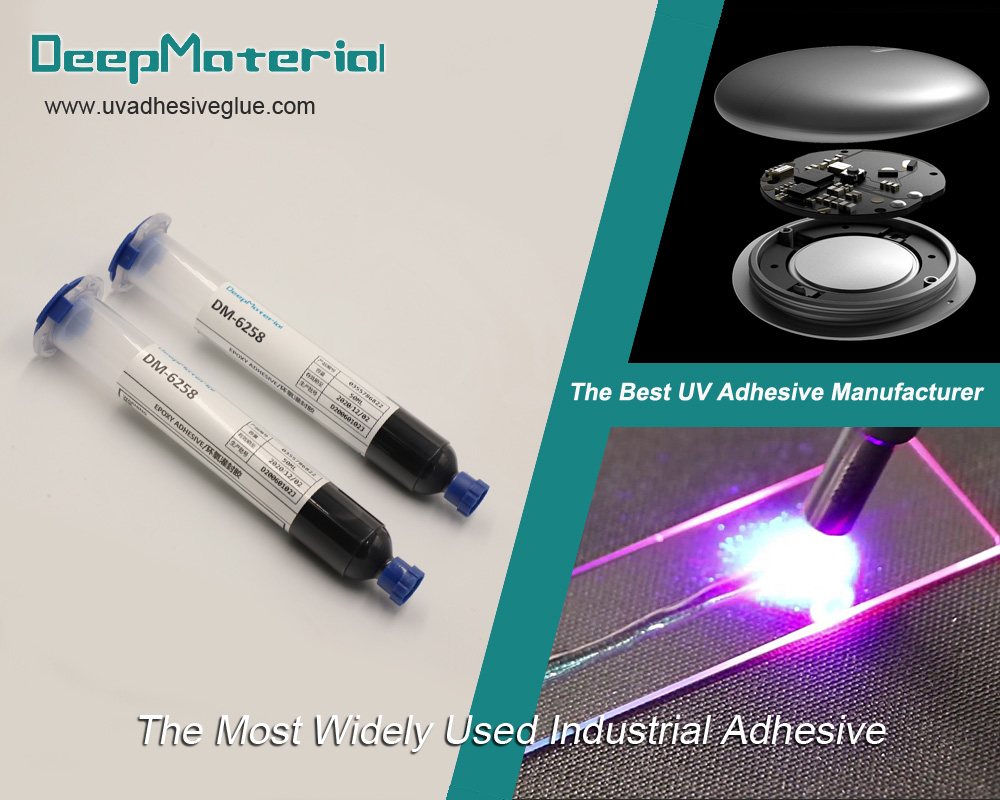Electronic adhesives, like any other chemical products, require careful consideration of safety and environmental factors. These adhesives are used in a wide range of electronic applications, such as bonding components on circuit boards, attaching displays, and sealing sensitive electronic devices. Electronic adhesives play a crucial role in bonding components and ensuring the reliability and performance of electronic devices. However, they also raise some safety and environmental considerations.
Safety and environmental considerations of electronic adhesives are essential to ensure the well-being of users, workers, and the planet. Here are some key aspects to consider:
- Toxicity and Hazardous Components: Some electronic adhesives may contain hazardous chemicals,The ingredients in electronic adhesives must be evaluated for their toxicity levels and potential hazards. Harmful chemicals, such as volatile organic compounds (VOCs) and heavy metals, should be minimized or eliminated to reduce health and environmental risks. Workers involved in the manufacturing or application process may be exposed to these chemicals, leading to health risks. Proper handling, ventilation, and personal protective equipment (PPE) are essential to minimize exposure.
- Flammability: Some electronic adhesives are volatile and flammable, presenting fire and explosion hazards. Proper storage, handling, and disposal procedures must be followed to prevent accidents and ensure workplace safety.
- Volatility: Adhesives that release significant amounts of VOCs can contribute to air pollution and affect indoor air quality. Using low-VOC or zero-VOC formulations can mitigate these environmental concerns.
- RoHS Compliance: Electronic adhesives must comply with the Restriction of Hazardous Substances (RoHS) directive, which restricts the use of specific hazardous substances, including lead, mercury, cadmium, and other harmful chemicals, in electrical and electronic equipment.
- REACH Compliance: The Registration, Evaluation, Authorization, and Restriction of Chemicals (REACH) regulation in the European Union requires manufacturers to identify and manage the risks associated with chemicals used in products, including electronic adhesives.
- Emission of Harmful Substances: During the curing or drying process, certain adhesives may release harmful emissions into the atmosphere. These emissions can contribute to air pollution and impact indoor air quality.These emissions can contribute to air pollution and negatively impact indoor air quality if not controlled or treated appropriately. Selecting low-VOC or low-emission adhesives can help reduce environmental impacts.
- Waste Management: Proper waste management is crucial for electronic adhesive materials. Unused or expired adhesives should be disposed of according to local regulations to avoid environmental contamination. Recycling and environmentally responsible disposal methods should be employed whenever possible. Especially if they contain hazardous materials, poper waste management practices are necessary to prevent environmental contamination and ensure compliance with relevant regulations.
- Waste and Recycling: For electronic devices that may undergo recycling or disassembly at the end of their life, the choice of adhesive can affect how easily components can be separated and recycled. Adhesives that allow for easy disassembly and recycling are preferable from an environmental perspective. Adhesive residues and waste materials should be managed properly to minimize environmental impact.
- Durability and Reliability: Electronic adhesives should be designed to maintain their performance and integrity over the intended lifespan of the electronic device. Premature adhesive failure could lead to potential safety hazards or environmental contamination. Especially in products like automotive electronics, aerospace applications, or medical devices where failure could have severe consequences.
- Health and Safety Measures: Manufacturers and users of electronic adhesives should follow proper safety measures, such as providing adequate ventilation and using personal protective equipment during application and curing processes.
- Electrical and Thermal Conductivity: The choice of electronic adhesive should consider its impact on electrical and thermal conductivity. Some adhesives may interfere with electrical signals or have poor thermal conductivity, leading to performance issues or overheating of electronic components.
- Environmental Impact: The sourcing of raw materials, production processes, and the life cycle of electronic adhesives should be assessed to minimize their environmental footprint. Using sustainable materials and production methods can help reduce negative environmental impacts.
- Compliance with Standards and Regulations: This is essential for ensuring the safety and environmental responsibility of electronic adhesives. Manufacturers of electronic adhesives must adhere to various safety, environmental, and performance standards and regulations, and may obtain certifications to demonstrate compliance with various regulations like ISO 14001 (Environmental Management Systems) and ISO 9001 (Quality Management Systems). Regulatory compliance is not only a legal requirement but also a significant aspect of corporate responsibility and sustainable business practices.
- Electrical Properties: Electronic adhesives must be carefully selected to ensure they do not interfere with the electrical properties of the components they are bonding. For example, some adhesives may cause interference with sensitive electronics, affecting the device’s performance and reliability.
- Thermal Management: In electronic devices, proper thermal management is crucial to prevent overheating, which can lead to component failure or reduced lifespan. Some adhesives may have poor thermal conductivity, affecting the heat dissipation of the device.
Considering these safety and environmental factors can help promote the responsible use of electronic adhesives, protect human health, and reduce the impact on the environment throughout the life cycle of electronic devices.
The compliance of electronic adhesives with relevant standards and regulations depends on the specific product, its intended use, and the region in which it is manufactured and sold. In general, reputable manufacturers of electronic adhesives strive to meet applicable standards and regulations to ensure product safety and environmental responsibility. Some of the key standards and regulations that electronic adhesives may need to comply with include:
- RoHS (Restriction of Hazardous Substances) Directive: This directive restricts the use of specific hazardous substances, such as lead, mercury, cadmium, and certain brominated flame retardants, in electrical and electronic equipment. Electronic adhesives used in consumer electronics and other electrical devices must comply with RoHS requirements to be sold in the European Union and other regions that have adopted similar regulations.
- REACH (Registration, Evaluation, Authorization, and Restriction of Chemicals): REACH is a regulation by the European Union that addresses the registration, evaluation, and authorization of chemicals to ensure their safe use. Manufacturers of electronic adhesives may need to comply with REACH requirements when exporting their products to the EU.
- UL (Underwriters Laboratories) Standards: UL is a global safety certification organization that sets safety standards for various products, including electronic adhesives used in electronic devices. Adhesive manufacturers may seek UL certification to demonstrate the safety and quality of their products.
- IPC (Association Connecting Electronics Industries) Standards: IPC provides a range of standards related to the design, manufacture, and assembly of electronic products. Adhesive materials used in electronics manufacturing may need to meet specific IPC standards to ensure compatibility and reliability.
- ISO (International Organization for Standardization): ISO standards cover various aspects of product quality, safety, and environmental management. Manufacturers may adhere to ISO 9001 (quality management) or ISO 14001 (environmental management) standards as part of their commitment to quality and environmental responsibility.
- OSHA (Occupational Safety and Health Administration) Regulations: For workplaces that handle electronic adhesives, adherence to OSHA regulations ensures the safety and well-being of workers during manufacturing, assembly, or repair processes.
- Country-Specific Regulations: Different countries may have their own regulations and standards related to electronic adhesives, especially those concerning hazardous substances, labeling, and waste management.
It’s important to note that not all electronic adhesives will be subject to the same standards and regulations. The applicability of specific requirements depends on the intended use of the adhesive and the market it is being sold in. Reputable manufacturers typically provide documentation and certifications demonstrating compliance with relevant standards, and users or buyers can inquire about this information when selecting electronic adhesives for their applications.
To address these considerations, manufacturers of electronic adhesives often invest in research and development to create products that are environmentally friendly, comply with regulations, and meet industry standards. Users of electronic adhesives must also follow recommended guidelines for safe handling, storage, and disposal. Before using any electronic adhesive, it is crucial to check its specifications, safety data sheets, and compliance with relevant standards to ensure it meets the required safety and environmental criteria. Consulting with regulatory experts and conducting proper testing can also help ensure the proper selection and use of electronic adhesives.
For more about choosing the electronic adhesive,you can pay a visit to DeepMaterial at https://www.uvadhesiveglue.com/for-electrical-appliances/ for more info.


